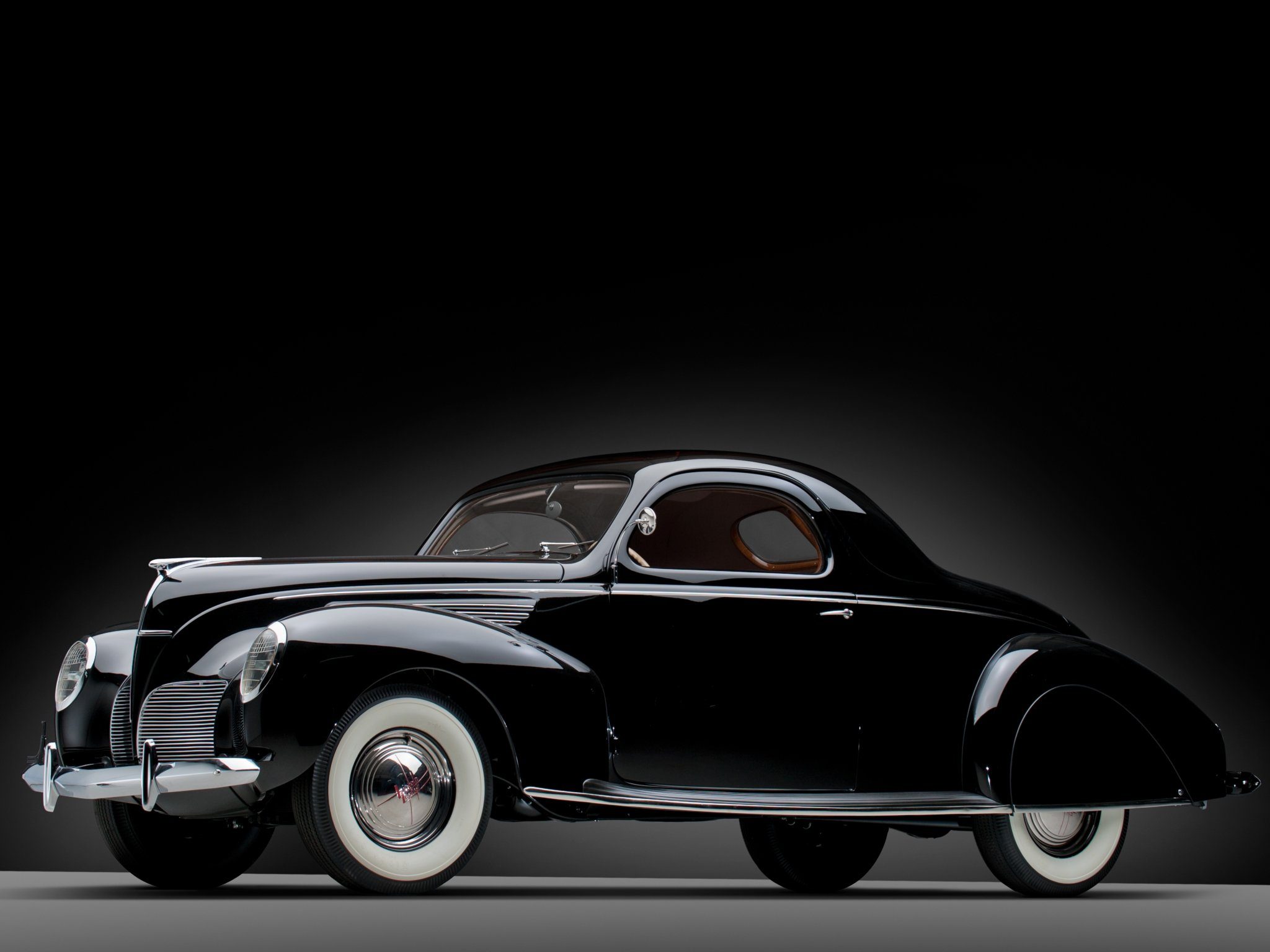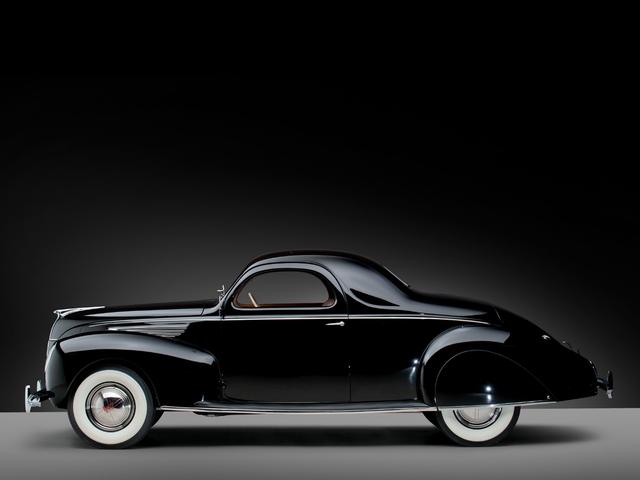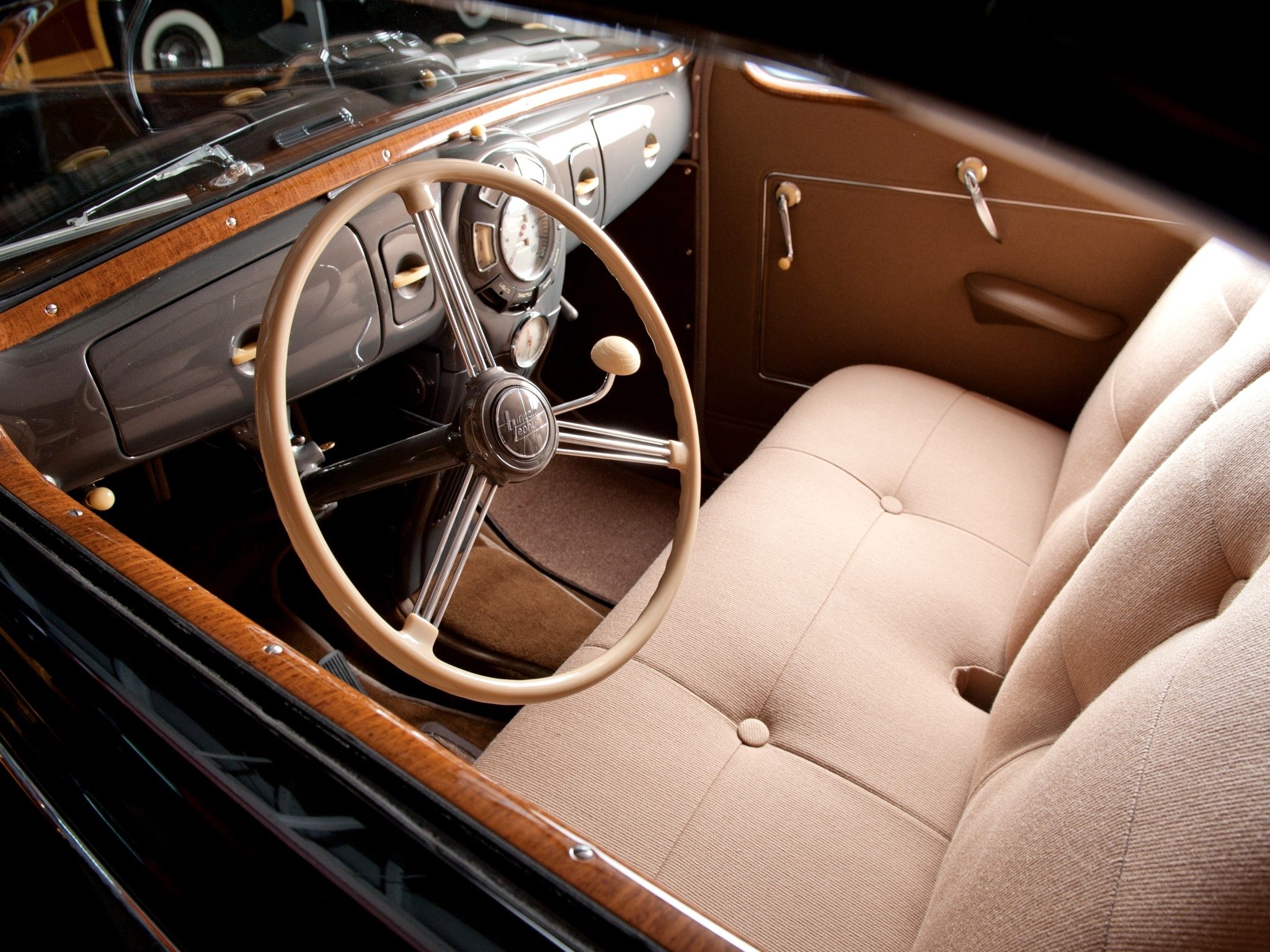- 716

- Chile
- cristobal458



On November 2, 1935, the Lincoln Motor Company unveiled a new model, the Lincoln-Zephyr. For Lincoln, which had sold barely 1,400 cars for 1935, the Zephyr was a fresh breeze in the Depression-weary automobile doldrums.
The new car had been developed from designer John Tjaara’s innovative Sterkenburg concept studies of the late 1920s. Smooth and streamlined, the Sterkenburg had a low frontal aspect and was designed for a rear-mounted engine. Edsel Ford became interested in Tjaarda’s work, and Briggs, one of Ford’s body suppliers, built a mockup that appeared at the 1934 Century of Progress exhibition in Chicago, Illinois.
For the production version to be manufactured by Ford, the engine was moved to the front, but the advanced bridge-truss integral frame was retained. Since it was to carry the Lincoln name, a V-12 was called for, but instead of the big engine from the Model K, a twelve based on the Ford V-8 was developed. Initially sold as a four-door sedan or a two-door “coupe-sedan,” the Lincoln-Zephyr offered a “Zephyr-smooth ride with all the passengers cradled between the axles.” A division-window Town Limousine was added in April 1936, and for the model year, nearly 15,000 Zephyrs were sold, while deliveries of big Lincolns hovered around the 1,500 mark.
A particularly sleek and handsome three-window coupe debuted for 1937, and the following year, designer E.T. “Bob” Gregorie gave the car a new nose. The 1938 Lincoln-Zephyr was modestly restyled, with twin grilles placed in the forward end of the “catwalk” section of the fenders. Not merely a styling gimmick, this change markedly improved engine cooling. The vee-shaped nose was softened, and the headlamps were made flush with the fender contours. In addition to the sedan, coupe, and coupe-sedan, as Ford called the two-door, six-passenger model, two new open styles appeared: a convertible coupe and a convertible sedan.
The new open models notwithstanding, many people consider the sleek three-passenger coupe to be the most attractive Lincoln-Zephyr. The 1938 coupe is harder to find than the 1937 since production dropped by half to 2,600.
1938 Lincoln-Zephyr Coupe | The Dingman Collection 2012 | RM Auctions (rmsothebys.com)
The new car had been developed from designer John Tjaara’s innovative Sterkenburg concept studies of the late 1920s. Smooth and streamlined, the Sterkenburg had a low frontal aspect and was designed for a rear-mounted engine. Edsel Ford became interested in Tjaarda’s work, and Briggs, one of Ford’s body suppliers, built a mockup that appeared at the 1934 Century of Progress exhibition in Chicago, Illinois.
For the production version to be manufactured by Ford, the engine was moved to the front, but the advanced bridge-truss integral frame was retained. Since it was to carry the Lincoln name, a V-12 was called for, but instead of the big engine from the Model K, a twelve based on the Ford V-8 was developed. Initially sold as a four-door sedan or a two-door “coupe-sedan,” the Lincoln-Zephyr offered a “Zephyr-smooth ride with all the passengers cradled between the axles.” A division-window Town Limousine was added in April 1936, and for the model year, nearly 15,000 Zephyrs were sold, while deliveries of big Lincolns hovered around the 1,500 mark.
A particularly sleek and handsome three-window coupe debuted for 1937, and the following year, designer E.T. “Bob” Gregorie gave the car a new nose. The 1938 Lincoln-Zephyr was modestly restyled, with twin grilles placed in the forward end of the “catwalk” section of the fenders. Not merely a styling gimmick, this change markedly improved engine cooling. The vee-shaped nose was softened, and the headlamps were made flush with the fender contours. In addition to the sedan, coupe, and coupe-sedan, as Ford called the two-door, six-passenger model, two new open styles appeared: a convertible coupe and a convertible sedan.
The new open models notwithstanding, many people consider the sleek three-passenger coupe to be the most attractive Lincoln-Zephyr. The 1938 coupe is harder to find than the 1937 since production dropped by half to 2,600.
This 1938 Lincoln-Zephyr coupe was restored in 2007 by Kevin Westmoreland’s Performance Restoration for former owner Donald Peterson, of Wilkesboro, North Carolina, at a cost of approximately $150,000. Subsequently, it was judged at 1,000 points and received Best of Show honors at the Lincoln-Zephyr Owners Club nationals in Indiana. It also received LZOC’s Peter Gregory Award for Best in Class and has AACA Junior and Senior credentials.
Upon its acquisition by the Dingman Collection, the restoration was still fresh. Gorgeous in gloss black paint, it has beige cord cloth upholstery that looks factory fresh. Grey-brown carpet lines the floor, and there is a tan cloth headliner overhead. The dashboard of Lincoln-Zephyrs of this era is distinctive. A console rises pillar-like from the floor, with an instrument binnacle at the top containing all the gauges. From the left side protrudes a shift lever, leaving the center passenger untrammeled during operation.
Correctly detailed and beautifully presented, this Lincoln-Zephyr three-passenger coupe runs on 7.00x16 Firestone Deluxe Champion whitewall tires. Mileage showing is 21,840, believed to be original. As one of the more attractive and rarer body styles, this car represents exceptional value, particularly with its multiple-award-winning restoration.
Upon its acquisition by the Dingman Collection, the restoration was still fresh. Gorgeous in gloss black paint, it has beige cord cloth upholstery that looks factory fresh. Grey-brown carpet lines the floor, and there is a tan cloth headliner overhead. The dashboard of Lincoln-Zephyrs of this era is distinctive. A console rises pillar-like from the floor, with an instrument binnacle at the top containing all the gauges. From the left side protrudes a shift lever, leaving the center passenger untrammeled during operation.
Correctly detailed and beautifully presented, this Lincoln-Zephyr three-passenger coupe runs on 7.00x16 Firestone Deluxe Champion whitewall tires. Mileage showing is 21,840, believed to be original. As one of the more attractive and rarer body styles, this car represents exceptional value, particularly with its multiple-award-winning restoration.
1938 Lincoln-Zephyr Coupe | The Dingman Collection 2012 | RM Auctions (rmsothebys.com)
SPECIFICATIONS
OVERVIEW
• Manufacturer: Lincoln
• Country: United States
• Year: 1938
• Type: Street car
• Division: N100
ENGINE
• Engine: L-head V-12 engine
• Power: 110 HP / 3900 rpm
• Torque: 244 Nm / 3500 rpm
• Engine location: Front
• Displacement: 4380 cc
• Aspiration: Naturally Aspirated
PERFORMANCE
• 0-100 km/h (0-62 mph) Time: Unknown
• Top Speed: 145 km/h (90 mph)
• Power-to-weight ratio: 0.07 hp/kg
DRIVETRAIN
• Drive: Rear wheel drive
• Gearbox: 3-speed manual transmission
• Brakes: Four-wheel mechanical drum brakes
DIMENSIONS & WEIGHT
• Lenght: 5334 mm
• Width: --- mm
• Height: 1765 mm
• Wheelbase: 3175 mm
• Weight: 1599 kg



OVERVIEW
• Manufacturer: Lincoln
• Country: United States
• Year: 1938
• Type: Street car
• Division: N100
ENGINE
• Engine: L-head V-12 engine
• Power: 110 HP / 3900 rpm
• Torque: 244 Nm / 3500 rpm
• Engine location: Front
• Displacement: 4380 cc
• Aspiration: Naturally Aspirated
PERFORMANCE
• 0-100 km/h (0-62 mph) Time: Unknown
• Top Speed: 145 km/h (90 mph)
• Power-to-weight ratio: 0.07 hp/kg
DRIVETRAIN
• Drive: Rear wheel drive
• Gearbox: 3-speed manual transmission
• Brakes: Four-wheel mechanical drum brakes
DIMENSIONS & WEIGHT
• Lenght: 5334 mm
• Width: --- mm
• Height: 1765 mm
• Wheelbase: 3175 mm
• Weight: 1599 kg


